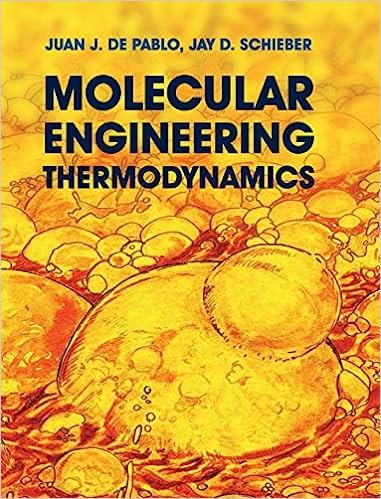Answered step by step
Verified Expert Solution
Question
1 Approved Answer
The second - order, elementary liquid - phase reaction 2 ! ! $ % # = 0 . 5 ( . ) 3
The secondorder, elementary liquidphase reaction
$#
is carried out in a nonideal CSTR The results from a tracer test on the CSTR are given in
the table below.
Time s
CTracermgL
Pure A enters the reactor at a temperature of K Calculate the conversion
predicted by the segregation model.
It is known that the following elementary reaction also occurs in the reactor:
#$
$$
Calculate the selectivity predicted by the segregation model.
Mathematical and
Scientific Terms
a How is the segregation model used in chemical reaction engineering?
Theory in
Engineering
Problems
b Fully describe and explain the segregation model. In your explanation include the
theoretical development of this model.
Mathematical
Methods
c What is the area under the C curve?
d Calculate the data for the Et curve.
e Find a polynomial that best fits the calculated data for the Et curve.
Calculations f Calculate the mean residence for an ideal CSTR based on the data given above.
g Calculate the conversion of A achieved and the selectivity,
& in an ideal CSTR
Calculations:
Mathematical
software
h Use polymath or software of your choice to calculate the conversion and selectivity,
& predicted by the segregation model.
Interpretation of
Data
i Compare and discuss your responses to questions g and h Step by step c alculations for all calculations related problems
Step by Step Solution
There are 3 Steps involved in it
Step: 1

Get Instant Access to Expert-Tailored Solutions
See step-by-step solutions with expert insights and AI powered tools for academic success
Step: 2

Step: 3

Ace Your Homework with AI
Get the answers you need in no time with our AI-driven, step-by-step assistance
Get Started


